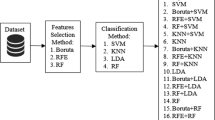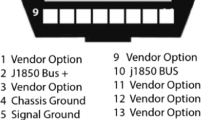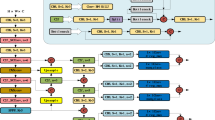Abstract
In resource-constrained wireless sensor network (WSN) environment object detection and tracking have many challenges such as low network lifetime, throughput, and efficiency. This study proposed a novel method called the Ensemble Random Bayes Support Vector-based Random Electric Eel (ERBS-REE) algorithm to enhance object detection. This work aims to enhance the efficiency of object tracking by employing techniques namely Support Vector Machine, Random Forest, and Naïve Bayes through ensemble voting. SVM is utilized to detect objects, Random Forest is employed to manage noisy data and Naïve Bayes through ensemble voting is implemented for classification of objects. The Electric Eel Optimizer is employed with a random update strategy to enhance the performance of the ERBS-REE method. The evaluation metrics such as throughput, average detection rate, energy consumption, network lifetime, and end-to-end delay are utilized to validate the performance of the method. The ERBS-REE method is compared with existing methods and the experimental results illustrate the performance of the ERBS-REE method in object detection and tracking. As a result, the ERBS-REE method efficiently detects moving objects within WSN while maintaining low energy consumption. Also, the ERBS-REE method is appropriate for applications such as environmental monitoring, and industrial automation and operates in challenging environments where human presence is limited.









Similar content being viewed by others
Data availability
The data that support the findings of this study are available from the corresponding author upon reasonable request.
References
Landaluce, H., Arjona, L., Perallos, A., Falcone, F., Angulo, I., Muralter, F.: A review of IoT sensing applications and challenges using RFID and wireless sensor networks. Sensors 20(9), 2495 (2020)
Bahra, N., Pierre, S.: A bidirectional trajectory prediction model for users in mobile networks. IEEE Access 10, 1921–1935 (2022). https://doi.org/10.1109/ACCESS.2021.3139867
Adam, M.S., Anisi, M.H., Ali, I.: Object tracking sensor networks in smart cities: taxonomy, architecture, applications, research challenges and future directions. Futur. Gener. Comput. Syst. 107, 909–923 (2020)
Cao, X., Madria, S.: An efficient moving object tracking framework for WSNs using a sequence-to-sequence learning model. Peer-to-Peer Netw. Appl. 14(6), 3915–3928 (2021)
Alqaralleh, B.A., Mohanty, S.N., Gupta, D., Khanna, A., Shankar, K., Vaiyapuri, T.: Reliable multi-object tracking model using deep learning and energy-efficient wireless multimedia sensor networks. IEEE Access 8, 213426–213436 (2020)
Zhu, H., Luo, M.: Hybrid robust sequential fusion estimation for WSN-assisted moving-target localization with sensor-node-position uncertainty. IEEE Trans. Instrum. Meas. 69(9), 6499–6508 (2020)
Umbreen, S., Shehzad, D., Shafi, N., Khan, B., Habib, U.: An energy-efficient mobility-based cluster head selection for lifetime enhancement of wireless sensor networks. IEEE Access 8, 207779–207793 (2020)
Asha, A., Arunachalam, R., Poonguzhali, I., Urooj, S., Alelyani, S.: Optimized RNN-based performance prediction of IoT and WSN-oriented smart city application using improved honey badger algorithm. Measurement 210, 112505 (2023)
Hu, J., Wang, T., Yang, J., Lan, Y., Lv, S., Zhang, Y.: WSN-assisted UAV trajectory adjustment for pesticide drift control. Sensors 20(19), 5473 (2020)
Ullah, A., Ishaq, N., Azeem, M., Ashraf, H., Jhanjhi, N.Z., Humayun, M., Tabbakh, T.A., Almusaylim, Z.A.: A survey on continuous object tracking and boundary detection schemes in IoT-assisted wireless sensor networks. IEEE Access 9, 126324–126336 (2021)
Bouaziz, M., Rachedi, A., Belghith, A.: EKF-MRPL: advanced mobility support routing protocol for internet of mobile things: Movement prediction approach. Futur. Gener. Comput. Syst. 93, 822–832 (2019)
Abdel-Halim, I.T., Fahmy, H.M.A., Bahaa-El Din, A.M.: Mobility prediction-based efficient clustering scheme for connected and automated vehicles in VANETs. Comput. Netw.. Netw. 150, 217–233 (2019)
Ye, M., Guan, L., Quddus, M.: TDMP: reliable target-driven and mobility prediction-based routing protocol in complex vehicular ad-hoc networks. Veh. Commun. 31, 100361 (2021)
Ajinu, A., Maheswaran, C.P.: A novel prediction model for mobility tracing of users with a hybrid metaheuristic concept. Wireless Netw. 28(1), 107–123 (2022)
Dev, J., Mishra, J.: Energy-efficient object detection and tracking framework for wireless sensor network. Sensors 23(2), 746 (2023)
Hossain, S., Lee, D.J.: Deep learning-based real-time multiple-object detection and tracking from aerial imagery via a flying robot with GPU-based embedded devices. Sensors 19(15), 3371 (2019)
Koushik, C.P., Vetrivelan, P.: Heuristic relay-node selection in the opportunistic network using RNN-LSTM-based mobility prediction. Wireless Pers. Commun. 114(3), 2363–2388 (2020)
Montoya, G.A., Lozano-Garzón, C., Donoso, Y.: Energy-efficient and delay sensitive routing paths using mobility prediction in mobile WSN: mathematical optimization, markov chains, and deep learning approaches. IEEE Access 9, 153382–153400 (2021)
Wang, H., Wang, H., Wu, Z., Zhou, Y.: Using multi-factor analysis to predict urban flood depth based on Naive Bayes. Water 13(4), 432 (2021)
Liu, Y., Wang, X., Li, L., Cheng, S., Chen, Z.: A novel lane change decision-making model of autonomous vehicle based on support vector machine. IEEE Access 7, 26543–26550 (2019)
Balyan, A.K., Ahuja, S., Lilhore, U.K., Sharma, S.K., Manoharan, P., Algarni, A.D., Elmannai, H., Raahemifar, K.: A hybrid intrusion detection model using ega-pso and improved random forest method. Sensors 22(16), 5986 (2022)
Chatterjee, S., Byun, Y.C.: Voting ensemble approach for enhancing Alzheimer’s disease classification. Sensors 22(19), 7661 (2022)
Zhao, W., Wang, L., Zhang, Z., Fan, H., Zhang, J., Mirjalili, S., Khodadadi, N., Cao, Q.: Electric eel foraging optimization: a new bio-inspired optimizer for engineering applications. Expert Syst. Appl. 238, 122200 (2024)
Dadashi, H., Mohammadi, M.: Random update particle swarm optimizer (RUPSO): A novel robust optimization algorithm. Structures 56, 104933 (2023)
Acknowledgements
Not applicable.
Funding
Not applicable.
Author information
Authors and Affiliations
Contributions
All authors contributed to the study conception and design. Material preparation, data collection and analysis were performed by Siva T and Merline A. The first draft of the manuscript was written by Siva T and all authors commented on previous versions of the manuscript. All authors read and approved the final manuscript.
Corresponding author
Ethics declarations
Conflict of interest
The authors declare that they have no conflict of interest.
Consent to participate
Not applicable.
Consent for publication
Not applicable.
Human and animal rights
This article does not contain any studies with human or animal subjects performed by any of the authors.
Informed consent
Informed consent was obtained from all individual participants included in the study.
Additional information
Publisher's Note
Springer Nature remains neutral with regard to jurisdictional claims in published maps and institutional affiliations.
Rights and permissions
Springer Nature or its licensor (e.g. a society or other partner) holds exclusive rights to this article under a publishing agreement with the author(s) or other rightsholder(s); author self-archiving of the accepted manuscript version of this article is solely governed by the terms of such publishing agreement and applicable law.
About this article
Cite this article
Siva, T., Merline, A. Optimizing network lifetime: ERBS-REE for resilient object detection and tracking in resource-constrained WSN environments. SIViP (2024). https://doi.org/10.1007/s11760-024-03225-x
Received:
Revised:
Accepted:
Published:
DOI: https://doi.org/10.1007/s11760-024-03225-x




